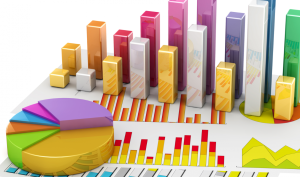
Are you confused about the difference between probability and statistics? You are not alone! Many struggle to determine the key distinctions between these two closely related topics. In this blog, we will discuss the major differences between probability and statistics with the help of examples, as well as how they are used in the field of data science. By understanding the nuances between probability and statistics, you will be able to use these concepts appropriate when solving data science related problems. So here we go!
Probability & Statistics Difference – By Example
Take a bag of marbles. You got your hand in the bag blindly and grabbed a handful of marbles.
In probability, you have the information about what’s in the bag and you use that information to guess or find out probability of what’s in your hand.
In statistics, you find out what’s in the bag (population) based on what you grabbed (sample) in the hand.
Here are a couple of real-world examples that would help understand the difference between probability and statistics:
- Based on statistics, infer which political party will win: After the elections are done, exit poll companies gather the information from a random sample of voters across different polling stations and use that information to infer the party which might win the election. Statistics can help determine the difference in the voting pattern of different regions and help political parties design election campaigns appropriately by studying independent parameters.
- Based on probability, Casinos design & create games and commercialize them to make profit. One example of how Casinos leverage probability concept to make profits is by offering games such as Blackjack and Roulette, which have a house edge. The house edge is the mathematical advantage that the Casino has over players, which gives it a greater chance of making more money than it pays out. This edge is built into the game, so it doesn’t matter how well or how badly players play their hands. For example, in Blackjack, the house always wins if both the player and dealer bust (exceed 21). Similarly in Roulette, the wheel has 36 numbered pockets plus 0 or 00. When players bet on an individual number, they have an 18/38 chance of winning (2/38 for 0 and 00), which gives the Casino a 5.3% house edge.
Probability & Statistics Difference – By Definition
Probability is the measure of how likely a certain event or outcome is to occur. It is expressed as a numerical value between 0 and 1, where the higher the number, the more likely it is for the event to occur. For example, if a coin is flipped, there is an equal chance that it will land on heads or tails, and thus the probability of either event occurring is 0.5 (or 50%).
Statistics is an area of mathematics that involves collecting, analyzing, interpreting, and presenting data. It is used to describe the characteristics of a population or sample and to draw conclusions about the population from which the sample was drawn. It is also used in hypothesis testing, where statistical methods are used to evaluate whether a given hypothesis is supported by a set of data. An example of statistics includes using a survey to measure the percentage of people who prefer a certain type of product. By gathering data about individual responses to the survey questions, researchers can find out what percentage of people prefer one type over another.
Conclusion
In conclusion, probability and statistics are two closely related fields of mathematics that are used to make predictions and draw conclusions about the behavior of a large population. While both involve the collection, analysis and interpretation of data, probability uses probability theory to predict future outcomes and make decisions based on random events whereas statistics is used to uncover patterns in data that can be used to draw meaningful conclusions regarding a population. Both disciplines have their advantages and disadvantages, but each plays an important role in many aspects of our everyday lives.
- Coefficient of Variation in Regression Modelling: Example - November 9, 2025
- Chunking Strategies for RAG with Examples - November 2, 2025
- RAG Pipeline: 6 Steps for Creating Naive RAG App - November 1, 2025
I found it very helpful. However the differences are not too understandable for me